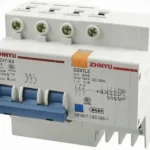Semiconductors are widely used materials to help provide the proper conduction of electricity between insulators and conductors. These are a major part of modern-day electrical appliances and electronics overall as they allow the control of the flow of the electrical current. It is made up of substances like germanium or silicon and is configured along the lines of the doping procedure where the semiconductors are set to have positive or negative charges.
Semiconductors are used in all types of electronic devices like diodes, transistors, integrated circuits, and more. We’ve all been reading news on semiconductor chips for so many years. That just speaks of its wide array of usage.
The development of semiconductors has allowed for lots of innovation and growth in the technology field and has had a major say in how we develop our electrical devices. It comes with a host of benefits. But there are a few negatives about it too and we’ll look to decipher both sides of the story down below. Read along.
![]()
Advantages of Semiconductors
1. Compact and Portable
Semiconductors are pretty compact and that makes it ever so flexible and portable to carry around. The physical size and aspect of these devices are as small as that of electron tubes which is pretty small. This is why it can be used in various circuit boards, chips, transistors, and more with ease. A lot of our electrical devices have become smaller in size whilst improving in performance and semiconductors are one key reason for that.
2. Can operate on low-voltage
Another great thing about semiconductor devices is that they can run easily even on low voltages without affecting the efficiency of the performance. They require minimal voltage to operate and consume very little power as compared to other major electrical components. This allows them to be integrated into the devices without much need for a heavy-duty power supply.
3. No requirement for warm-time
Semiconductor doesn’t require warm-up time to start the operation like many other electrical components. It doesn’t need to be pre-heated to a certain temperature to allow the functioning which is why it can start operating as soon as the circuit is switched on. This is a welcome change from the previous era where electrical components needed to be booted up and left aside for a period before allowing the operation to commence.
4. Longevity
Semiconductor devices have a very large operation lifespan and can run for unlimited time until there are some malfunctions in the voltage supply or circuits which erodes or burns it. The usage cycle of semiconductors has given manufacturers a great viable option instead of previous electron tubes which came with a limited lifespan. This helps in manufacturing machines with a larger life span.
5. Ability to withstand mechanical shocks
Devices with electron tubes often had a hard time withstanding mechanical shocks as any falling or breaking of the device would result in damage to the tube and need replacement. This used to affect lot many electronic devices in the past. Semiconductors meanwhile can withstand mechanical shocks to a large extent and don’t cause damage to the device’s falling or breaking.
6. No vacuum deterioration
On normal electron tubes, the transistors need to have a vacuum created for it to function. This causes vacuum deterioration and performance issues a lot of the time. With semiconductors, there is no need for vacuum creation in the transistors, this saves on the vacuum deterioration and on the performance loss allowing it to function seamlessly.
Disadvantages of Semiconductors
1. Susceptible to environmental factors
Semiconductors though being efficient in performance are susceptible to environmental factors like voltage fluctuations and temperature. The performance of semiconductors and their efficiency can decrease or lessen during high temperatures and malfunction or sudden cutbacks on the voltage. This can affect the performance of the electrical device and also halt the work being conducted.
2. Expensive
Manufacturing semiconductors is pretty expensive to be fair. It requires the use of advanced manufacturing processes and materials for the creation which is expensive to set up. The entire semiconductor devices manufacturing requires a state-of-the-art factory taking up huge capital. Also, the need for expensive materials that are limited in nature makes them susceptible to high pricing and costs.
3. Extensive miniaturization can cause heat dissipation
The overall size of the semiconductors is becoming smaller and miniature with time. These days semiconductors come in such a small size that they can be fitted into even the smallest of electronic machines. But that also creates an issue of challenges in heat dissipation. Without a proper mechanism of heat dissipation, the performance of the semiconductor will wilt and may degrade the machine and its reliability. And that’s something still being figured out. The longer such issues persist, the harder it will be to finesse the use of semiconductors in miniature form and machines.
Final words
The use of semiconductors is so vast that almost all electrical devices come equipped with semiconductors. It allows for better conductivity between the conductors, i.e. metals and nonconductors like ceramics. We’ve all seen how the use of semiconductors has upgraded our technology and the overall performance of the machines that we use. There are a lot of innovations happening and the pros of using semiconductors will further extend to a lot. However, there are still a few things that need to be taken care of. We hope you understand both aspects of semiconductors better with this article.

